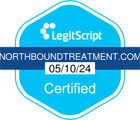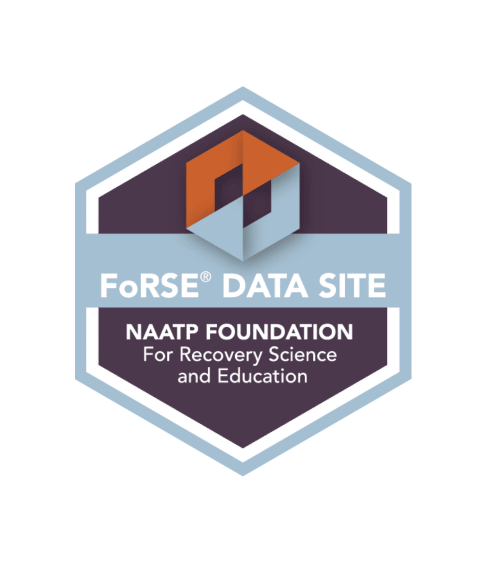Clonidine (an alpha-2 adrenergic agonist) is FDA-approved for hypertension and certain extended-release (ER) products for ADHD—not for anxiety. It may blunt “fight-or-flight” symptoms (e.g., palpitations), but evidence is limited versus first-line options like therapy and SSRIs/SNRIs. Abrupt discontinuation can cause rebound hypertension, so taper with a clinician [1], [2].
Anxiety relief is highly individualized. Use clonidine—if at all—as a niche or adjunct option when autonomic symptoms dominate and first-line treatments aren’t tolerated. Discuss risks (sedation, low blood pressure) and a clear taper plan with your prescriber [1], [4].
Key Takeaways
- Off-label for anxiety: On-label uses are hypertension (IR/patch) and ADHD (certain ER forms); anxiety use is off-label [1], [5].
- Helps physical symptoms: Can reduce racing heart/sweating via sympathetic quieting; limited data for core anxiety relief vs CBT/SSRIs/SNRIs [6], [7].
- Safety priority: Common effects are sedation, dizziness, dry mouth; abrupt stops can spike blood pressure—taper [11].
Q: Is Clonidine Used for Anxiety?
A: Sometimes—off-label and case-by-case. It can blunt physical “fight-or-flight” symptoms (racing heart, sweating), but first-line options like cognitive behavioral therapy and SSRIs/SNRIs have stronger evidence for durable relief and relapse prevention [2], [6].
Q: What Is Clonidine Approved For, and How Does It Work?
Approved uses: Hypertension (IR tablets, weekly transdermal patch) and ADHD for certain ER products (e.g., Kapvay®) [1], [5].
Mechanism: Central alpha-2 agonist: reduces sympathetic outflow → slower heart rate and vasodilation, which can “feel calming” but doesn’t directly treat anxious thoughts the way therapy/serotonergic meds do [3], [6].
Clonidine vs. first-line anxiety options (quick map)
| Criteria | Clonidine (off-label) | First-line: CBT / SSRIs–SNRIs |
| Primary target | Autonomic symptoms (palpitations, sweating) [6] | Cognitive/behavioral drivers; broad symptom clusters [2] |
| Evidence strength | Limited, condition-specific [7] | Robust for many anxiety disorders [2] |
| On-label for anxiety | No | N/A (meds are on-label; CBT is guideline-endorsed) |
| Key risks | Sedation, hypotension; rebound hypertension if stopped abruptly [1] | SSRI/SNRI GI upset, activation; therapy requires time/effort |
Q: What Are the Common Side Effects and Unique Risks?
- Common: Dry mouth, sedation, dizziness, fatigue, constipation [1], [11].
- Less common but serious: Bradycardia, hypotension, mood changes, sexual dysfunction; patch-site reactions [1], [3].
- Unique: Rebound hypertension if you stop suddenly—always plan a taper [1].
Q: Which Brand Names and Formulations Might My Clinician Mention?
Brands & forms: Catapres® (IR), Catapres-TTS® (patch), Kapvay® (ER for ADHD), Nexiclon XR® (ER) [4], [5].
Tip: Patches deliver steadily over 7 days but can irritate skin [1].
Q: How Is Dosing Handled? (Don’t DIY)
Principle: Start low, go slow; plan the taper:
- Clinicians often begin at low doses (e.g., 0.1 mg at bedtime or divided) and titrate.
- ER/ADHD schedules differ.
- Anxiety dosing isn’t standardized because it’s off-label—your prescriber individualizes based on symptoms and vitals [1], [4], [8].
Q: What About Sleep?
Short answer: Sedation ≠ restorative sleep.
- Off-label bedtime use may help hyperarousal, but next-day grogginess or low blood pressure can occur.
- Prioritize sleep hygiene and first-line insomnia strategies before medication [2], [6].
Interactions and Safety Checks
(Read this with your clinician)
- Other sedatives/alcohol/benzodiazepines: Additive drowsiness, accident risk [1], [9].
- Antidepressants (SSRIs/SNRIs): Often compatible; monitor for dizziness/low BP/sedation [1].
- Stimulants (ADHD): Sometimes co-prescribed; clinicians monitor opposing CV effects [5].
- Antihypertensives: Additive hypotension/bradycardia possible [1].
Who Might (and Might Not) Be a Candidate?
- Possible candidates: Prominent autonomic symptoms (palpitations/sweats), comorbid hypertension, ADHD needing ER forms, intolerance of first-line meds [1], [5].
- Use caution/avoid: Pregnancy (risk–benefit), bradycardia, symptomatic hypotension/syncope, uncontrolled depression or heavy daytime sedation, poor adherence (rebound risk) [1], [2].
What Are Evidence-based Alternatives?
- Psychotherapy: Cognitive behavioral therapy (CBT) and exposure-based therapies.
- Medications: SSRIs/SNRIs; buspirone for generalized anxiety; hydroxyzine short-term; propranolol for performance anxiety; benzodiazepines only short-term, carefully supervised due to dependence risks [2], [3].
- Lifestyle & skills: Sleep regularity, exercise, caffeine/alcohol review, breathing skills, peer support [1].
Mini-Glossary
- Alpha-2 (α2) agonist: Mechanism: reduces sympathetic (fight-or-flight) signaling from the brainstem [3].
- Rebound hypertension: Definition: sharp blood pressure rise after abrupt discontinuation of antihypertensives like clonidine [1].
- ER vs IR: Extended-release vs immediate-release: longer vs shorter duration; ER used for ADHD in certain products [5].
Step-by-step: Considering Clonidine (checklist)
- Clarify your goal: Are autonomic symptoms (racing heart, sweating) the main problem?
- Review first-line options: CBT and SSRIs/SNRIs tried or contraindicated?
- Screen risks: Baseline BP/HR, syncope history, meds/alcohol/benzos use [1].
- Choose formulation: IR vs patch vs ER (for ADHD contexts) [4], [5].
- Start low, go slow: Schedule follow-ups for vitals and sedation check.
- Set taper plan: Put the specific taper steps in writing to avoid rebound hypertension [1].
Example Taper Timeline (illustrative only—follow your prescriber)
- Week 0: Confirm no missed doses; identify BP monitor plan.
- Weeks 1–2: Reduce total daily dose by ~10–25% per week; monitor BP/HR, symptoms.
- Weeks 3–4: Continue decrements; slow down if dizziness/headache or BP rises.
- Post-taper: Keep monitoring for a week; have a contingency plan if BP spikes [1].
FAQs
Is Clonidine FDA-approved for anxiety?
No. Anxiety use is off-label and individualized [1], [6].
How fast does it work?
Autonomic calming can occur within hours after a dose, but clinical response varies by person and formulation [2], [6].
Can I take Clonidine with an SSRI?
Often, yes—with monitoring for dizziness, sedation, or low blood pressure; coordinate with your prescriber [1].
Is it addictive?
Clonidine isn’t a controlled substance, but stopping suddenly can cause rebound hypertension and withdrawal-like symptoms; taper with your clinician [1].
Can it help panic attacks?
It may blunt the physical surge for some, but CBT and SSRIs/SNRIs have stronger evidence for preventing attacks [6], [7].
Seeking Help and the Path to Recovery at Northbound
At Northbound, we have extensive experience helping patients overcome their substance abuse addictions.
The first steps are detoxification and stabilization, under 24-hour medical supervision in our Withdrawal Management center for whatever time you may require.
We offer a wide range of evidence-based therapies, counseling, and trauma-informed support to assist you in your healing. We personalize each treatment plan around the needs of our patients.
Our inpatient residential program offers 24/7 live-in treatment for substance abuse. Our outpatient treatment provides a flexible step-down from our residential program allowing you to live at home and participate for several hours a day.
For more than 30 years, Northbound Treatment Services in California has been at the forefront of providing lifesaving, compassionate residential care and specialized services to help people from all walks of life feel better, discover themselves, and live free from addiction.
We have facilities located throughout California to help guide you on your recovery journey. Reach out to our admissions team now.
Sources
- MedlinePlus. (2024). Clonidine (patient drug monograph). https://www.medlineplus.gov/druginfo/meds/a682243.html — Patch info: https://medlineplus.gov/druginfo/meds/a608049.html
- Mayo Clinic. (2024). Clonidine (oral route). https://www.mayoclinic.org/drugs-supplements/clonidine-oral-route/description/drg-20063252
- Drugs.com. (n.d.). Clonidine: Uses, dosage, side effects. https://www.drugs.com/clonidine.html
- Medscape Reference. (2025). Catapres, Catapres-TTS (clonidine). https://reference.medscape.com/drug/catapres-tts-onyda-xr-clonidine-342382
- WebMD. (2025). Nexiclon XR (clonidine) — Uses, side effects, interactions. https://www.webmd.com/drugs/2/drug-155114/nexiclon-xr-oral/details
- Wikipedia. (2025). Clonidine. https://en.wikipedia.org/wiki/Clonidine
- JAMA Psychiatry. (historic/limited-evidence reports). Clonidine and anxiety-related indications. https://jamanetwork.com/journals/jamapsychiatry/fullarticle/492671
- Kaiser Permanente. (2025). Clonidine HCl 0.1 mg tablet. https://healthy.kaiserpermanente.org/health-wellness/drug-encyclopedia/drug.clonidine-hcl-0-1-mg-tablet.159940
- Drugs.com. (n.d.). Clonazepam (Klonopin). https://www.drugs.com/clonazepam.html
- Wikipedia. (2025). Clonazepam. https://en.wikipedia.org/wiki/Clonazepam
- Drugs.com. (n.d.). Clonidine ER — Side effects. https://www.drugs.com/sfx/clonidine-er-side-effects.html
Author
-

Clinical Director, Clinical Supervisor, EMDR Provider
I am a Licensed Clinical Social Worker and graduated with a degree from the USC School of Social Work in 2015 with an emphasis in mental health. I began my career working with the Orange County Welfare to Work Program providing mental health services to reduce barriers to employment. I have spent the last 5 years working various levels in behavioral health, providing direct service to those struggling with co-occurring disorders. Using an eclectic and integrative approach, I incorporate the AIP model with EMDR, Person-in-Environment (PIE), Motivational Interviewing (MI), Cognitive Behavioral Therapy (CBT), Dialectical Behavioral Therapy (DBT), family systems, interpersonal and solution-focused therapy along with Rogerian positive regard into my practice.











